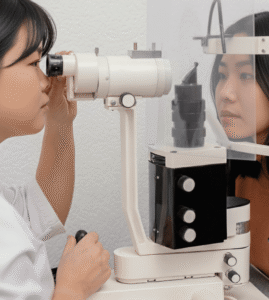Overview
Kussmaul breathing is a deep, labored, and rapid breathing pattern that often indicates a severe underlying metabolic condition. Named after the German physician Adolf Kussmaul, this breathing pattern is most commonly associated with metabolic acidosis, particularly diabetic ketoacidosis (DKA).
In Korea, hospitals and intensive care units (ICUs) are equipped to detect and treat Kussmaul breathing promptly. Early recognition by clinicians, along with advanced diagnostic tools and treatment protocols, can help manage underlying metabolic disturbances, prevent complications, and improve patient outcomes.
Key Facts
- ➔ Kussmaul breathing is characterized by deep, rapid, and labored respiration.
- ➔ It is usually a compensatory response to metabolic acidosis, where the body attempts to blow off excess carbon dioxide.
- ➔ Commonly seen in diabetic ketoacidosis, kidney failure, or severe sepsis.
- ➔ Unlike normal rapid breathing, Kussmaul respirations are purposeful and deep, not just shallow or quick breaths.
- ➔ Immediate medical evaluation is critical, as Kussmaul breathing indicates a serious systemic condition requiring urgent treatment.
What is Kussmaul Breathing?
Kussmaul breathing is a distinct pattern of respirations characterized by:
- ➔ Deep inhalation and exhalation: Large tidal volumes help reduce acidity in the blood.
- ➔ Regular, labored rhythm: Unlike irregular hyperventilation, Kussmaul breathing is consistent.
- ➔ Compensatory mechanism: The body uses rapid, deep breathing to lower CO₂ levels and counteract acidosis.
- ➔ Clinical significance: It serves as a visible warning sign of metabolic derangements, especially in critical care scenarios.
This breathing pattern is a key physical exam finding that can guide physicians toward urgent metabolic assessment.
What Symptoms Are Related To
Kussmaul breathing is often associated with systemic symptoms resulting from the underlying condition:
- ➔ Fatigue and weakness
- ➔ Nausea or vomiting
- ➔ Abdominal pain
- ➔ Fruity-smelling breath (in diabetic ketoacidosis)
- ➔ Confusion or altered mental status
- ➔ Rapid heartbeat or palpitations
- ➔ Dehydration or dry mucous membranes
- ➔ Low blood pressure in severe cases
Recognizing these accompanying symptoms alongside the breathing pattern helps clinicians identify the root cause quickly.
What Causes / Possible Causes
Kussmaul breathing is typically a response to metabolic acidosis, where the blood becomes too acidic. Common causes include:
- ➔ Diabetic ketoacidosis (DKA): Uncontrolled diabetes leads to fat breakdown, ketone accumulation, and acidosis.
- ➔ Chronic kidney disease or acute kidney injury: Impaired renal function reduces acid excretion.
- ➔ Severe sepsis or infection: Increased metabolic demand and organ dysfunction can cause acidosis.
- ➔ Lactic acidosis: Severe hypoxia or shock can increase lactic acid levels.
- ➔ Toxins or drug overdose: Substances like methanol or salicylates may induce acidosis.
Identifying the underlying cause is critical for targeted treatment and prevention of life-threatening complications.
When Should I See My Doctor
Kussmaul breathing is a medical emergency. Immediate evaluation is required if you notice:
- ➔ Rapid, deep, and labored breathing
- ➔ Confusion, drowsiness, or fainting
- ➔ Severe abdominal pain or persistent vomiting
- ➔ Fruity-smelling breath
- ➔ Signs of dehydration or hypotension
- ➔ Known diabetes with hyperglycemia or other metabolic disorders
Prompt hospital assessment is necessary to stabilize the patient and treat the underlying cause.
Care and Treatment
Management of Kussmaul breathing focuses on treating the underlying metabolic disorder:
- ➔ Diabetic ketoacidosis: Insulin therapy, fluid replacement, and electrolyte correction (especially potassium)
- ➔ Kidney-related acidosis: Dialysis, medications to correct acid-base balance, and supportive care
- ➔ Sepsis or infection: Intravenous antibiotics, fluids, and monitoring of organ function
- ➔ Electrolyte correction: Sodium, potassium, and bicarbonate replacement as needed
- ➔ Continuous monitoring: Vital signs, blood gases, and metabolic panels to track improvement
- ➔ Supportive care: Oxygen therapy, cardiac monitoring, and critical care support in severe cases
Correcting the underlying cause usually resolves Kussmaul breathing as metabolic balance is restored.
Treatment Options in Korea
Korean hospitals provide state-of-the-art care for patients exhibiting Kussmaul breathing:
- ➔ Critical care units (ICU): Continuous monitoring and rapid interventions for metabolic emergencies
- ➔ Laboratory diagnostics: Blood gas analysis, electrolyte testing, and metabolic panels for accurate assessment
- ➔ Endocrinology support: Specialized care for diabetic ketoacidosis and other metabolic disorders
- ➔ Nephrology interventions: Dialysis and renal support for kidney-related acidosis
- ➔ Multidisciplinary care: Collaboration between intensivists, endocrinologists, nephrologists, and critical care nurses
- ➔ Advanced monitoring and equipment: Ventilators, infusion pumps, and point-of-care testing for rapid stabilization
Leading hospitals like Seoul National University Hospital, Asan Medical Center, and Samsung Medical Center offer personalized treatment plans to address the root cause and stabilize patients efficiently.
In Summary: Kussmaul breathing is a critical clinical sign indicating severe metabolic acidosis, most commonly due to diabetic ketoacidosis or kidney dysfunction. Early recognition, prompt evaluation, and advanced treatment in Korea can stabilize the patient, correct the underlying disorder, and prevent life-threatening complications.
- ➔ Key Takeaway: Deep, labored breathing should never be ignored—it signals a serious systemic problem.
- ➔ Action Point: Seek emergency medical care immediately for accurate diagnosis and rapid intervention.













